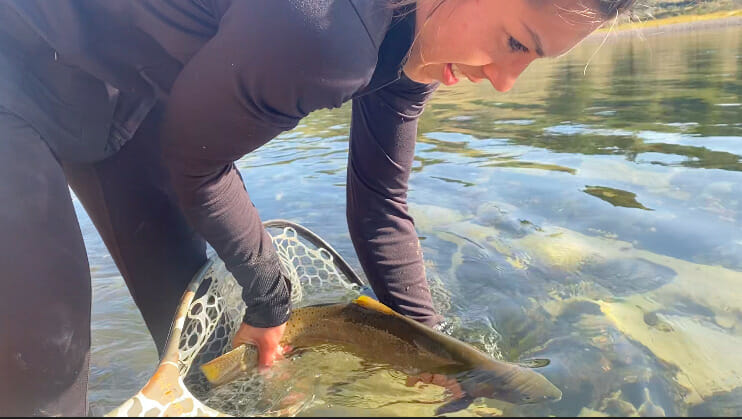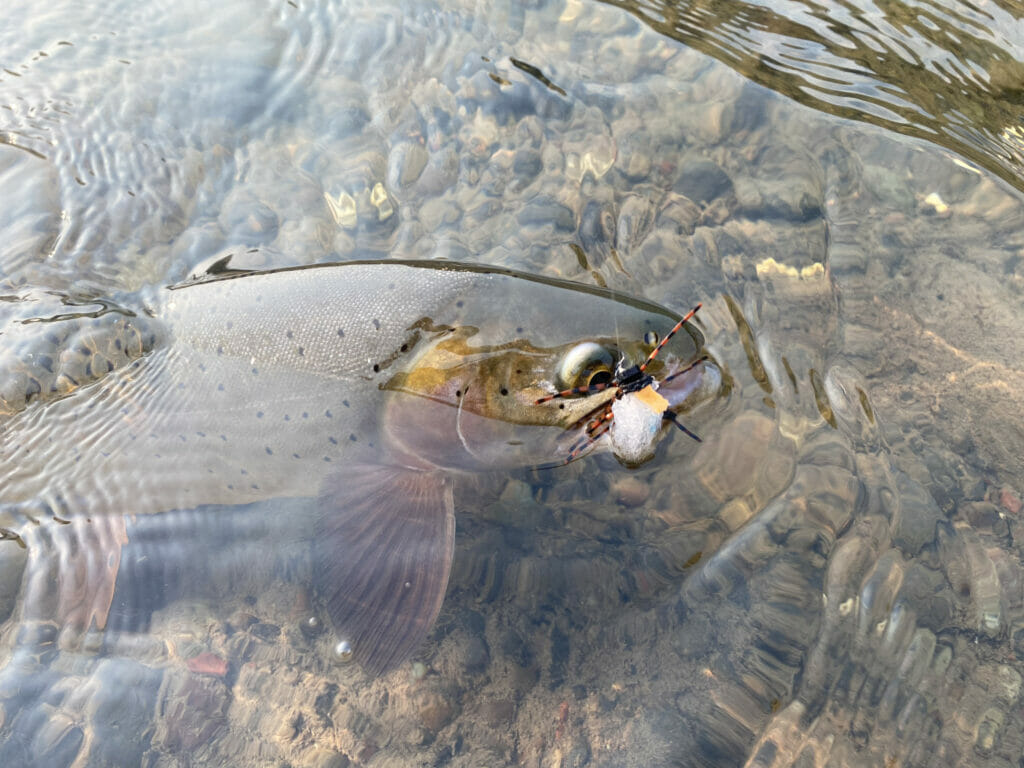Anna Hawkins from Minnesota releases a large Yellowstone cutthroat trout she landed on the Yellowstone River in Yellowstone National Park. Dan Ritz photo.
The Western Trout Challenge is more than Yellowstones on the Yellowstone in Yellowstone
Editor’s note: Daniel Ritz is fishing across the Western United States this summer in an attempt to accomplish the Master Caster class of the Western Native Trout Challenge. He will attempt to land each of the 20 native trout species in their historical ranges of the 12 states in the West. You can follow Ritz as he travels across the West by following Trout Unlimited, Orvis, Western Native Trout Challenge and Montana Fly Company on social media using the #WesternTroutChallenge.
Air temperatures were in the 40s as I settled into my pack while passing the lower Pine Creek waterfall.
I was happy to be back in Montana. I was happy to be back in my beloved Mountain West.
Squinting under the light of my headlamp, I glanced at my watch. It was 7 a.m. and I was shocked the sun had not yet risen. I had been on the trail more than an hour and was certain I had covered at least a few miles of the supposedly only 4-mile hike when the sun finally crested over a ridge to the east.
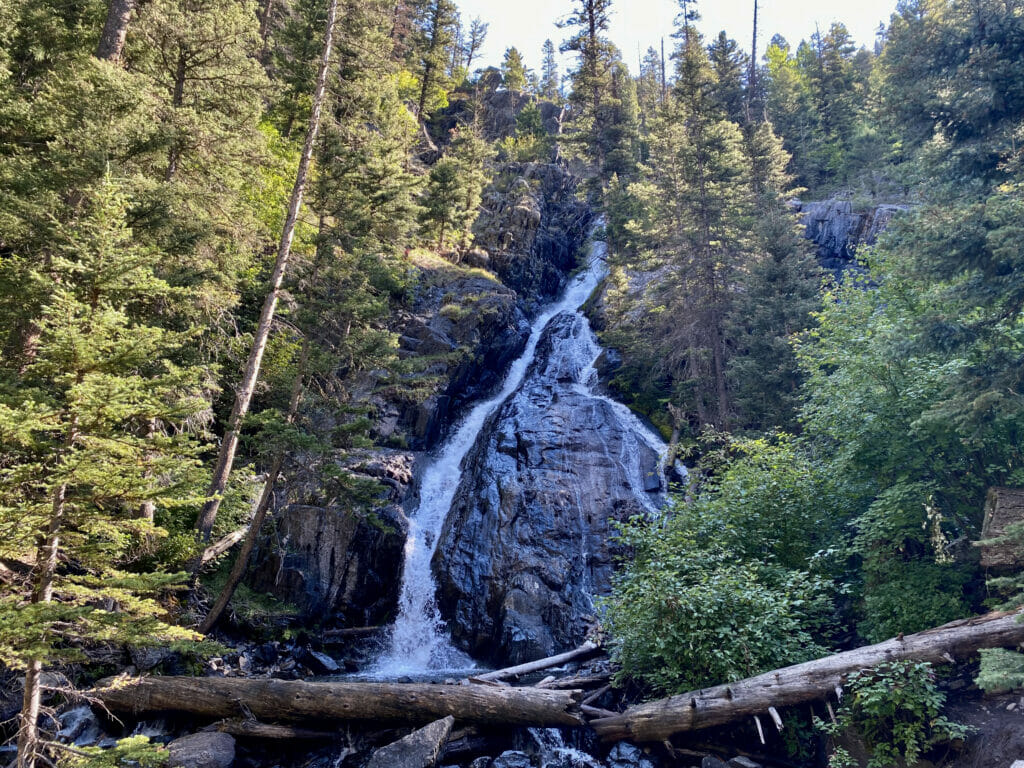
The ridge, of which logic told me the lake was behind, was still a few thousand feet higher in elevation than my vantage point.
I put my head down and got to walking. Passing the wooden sign for the Beartooth-Absaroka Wilderness outside Livingston, where the trail grade aggressively crescendos within the Gallatin National Forest, I realized I had severely underestimated the day ahead.
Turns out, I underestimated it in more ways than one.
With all the revered streams full of wild fish in Montana, arguably the iconic mecca of fly fishing, you might be wondering why I was headed to an obscure alpine lake — and a stocked lake at that.
Due to a funky fishing rule in Montana, I had to go to very specific locations to catch a Yellowstone cutthroat I could count for the Western Native Trout Challenge. The rule has to do with what Montana calls fishing contests. You see, in Montana two cutthroat – westslope and Yellowstone – can only be pursued for the challenge in stocked lakes and reservoirs. Say what? It seems counterintuitive to what the challenge — and fishing in Montana — is all about.

“The WNTC challenge was meant to educate,” said Zack Shattuck, native species coordinator for Montana Parks and Wildlife. “We fully support the WNTC idea. We acknowledge that maybe our language is a bit restrictive, and the stocked waters were a concession. To enjoy native fish, wild native fish in their native environment, doesn’t require a contest or an entrance fee. We take pride in that opportunity.”
In 1974, Montana did something that stunned anglers across the state and the nation: it stopped stocking trout in streams and rivers that supported wild trout populations.
Still, compared to the great Yellowstone River and other hidden gems I was scheduled to fish, I was very much looking forward to getting this “concession” session behind me.
As the trail continued to climb, I almost immediately regretted wishing the sun to rise. Temperatures rose quickly and it wasn’t long until I was drenched in sweat.
After an almost 3-hour hike, I finally reached Pine Creek Lake.
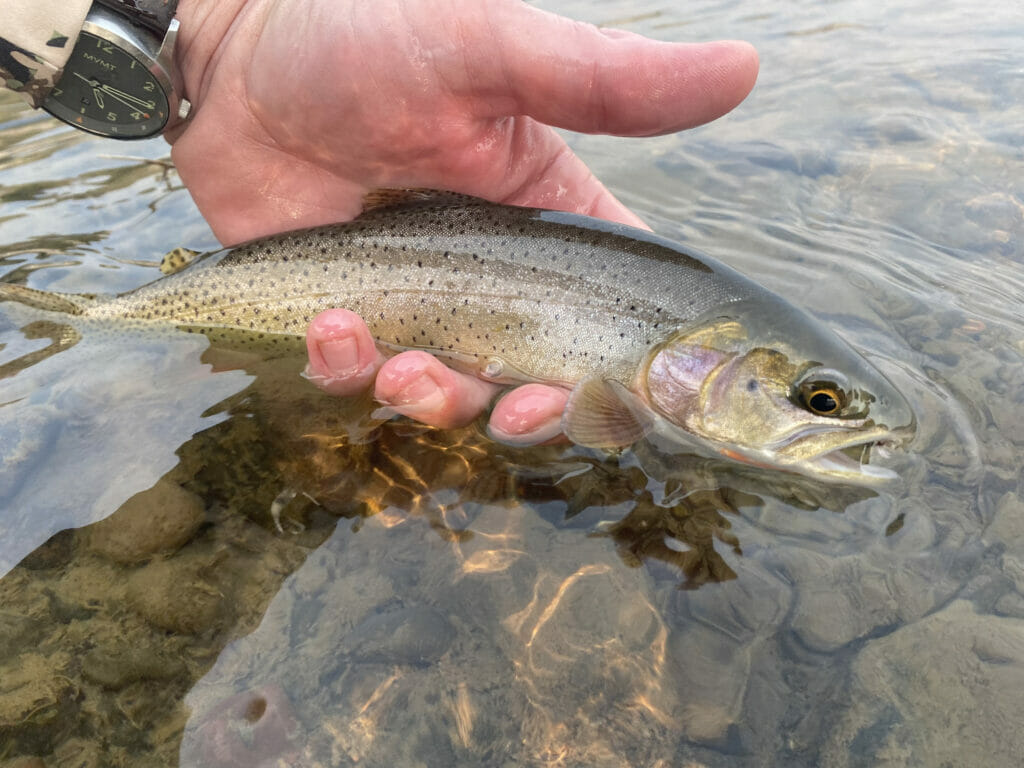
In the spirit of alpine lakes, a few minutes of scanning the shores of the lake for activity and carefully casting to the rises quickly rewarded me with a small Yellowstone cutthroat trout.
For two hours I rotated through various flies at different locations around the lake. I found stripping small wet flies over a drop off was a particularly successful — and enjoyable — tactic. I would watch cutthroat chase my collared hares ear almost to my feet before committing when the fly began to rise.
As the sun reached its apex in the cloudless sky, the fishing slowed. Deep in the bowl of Pine Creek Lake, I remember attempting to take a mental snapshot.
Descending the mountain, I realized I was pleasantly surprised with the experience and it helped ease the pain in my quivering legs. A morning I had expected to put behind me as quickly as possible had turned out to be a morning to remember.
After getting off the mountain and back to the truck, I had a few hours to burn before the sun began to set so I drove down U.S. 89 a few miles to another lake on the Western Native Trout Challenge’s Montana Fish Maps, approved for Yellowstone cutthroat trout. Thankfully, it looked as if this lake had drive-up access as my legs were fried from the morning’s adventure.
I enjoyed a long, lazy day fishing Dailey Lake with just enough success to enjoy it. As daylight began to dim in the Big Sky, I lazily cast a two-handed trout spey rod, slowly retrieving nymphs and leeches all the way back to the shore.
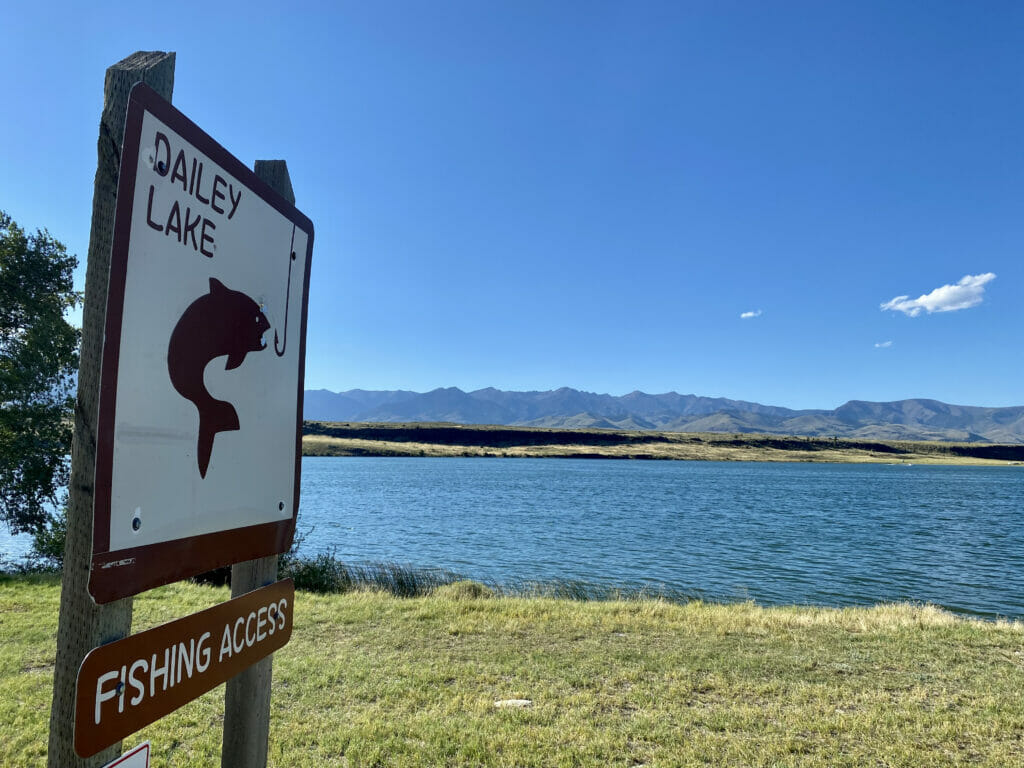
A cold beer pulled from the pocket in my waders helped me celebrate a long and successful day. After a long sip, I let out one of those throaty, “Ahhhh” sighs , the kind reserved for when you are alone, and started prepping for the next day.
Again, I thought of how this Montana trip wasn’t nearly as dreadful as I had anticipated.
The next day I was shocked from my sleep in the back of the truck as overnight temperatures plummeted into the mid-20s.
Still wiping the sleep from my eyes, I threw on a jacket and knit cap and scrambled to heat some coffee before heading just a few miles south to meet Said Medina. You may remember Medina from an earlier installment of our #WesternTroutChallenge series as he joined me in pursuit of the now hard-to-find native westslope cutthroat within Yellowstone National Park.
While we had been successful in finding a few 6- to 8-inch westslopes in the scalding summer sun of June, today, we were rigged for a different day of angling.
We were going swinging for the iconic Yellowstones of the Yellowstone River in the park.
Puffy jackets and sink tips loaded up, Medina and I strolled along a raised bank of the Yellowstone, scanning for fish. Through the crystal-clear waters, you could easily see the steep drop offs where trophy Yellowstone cutthroat trout assuredly lived in the nearly cyan colored water.
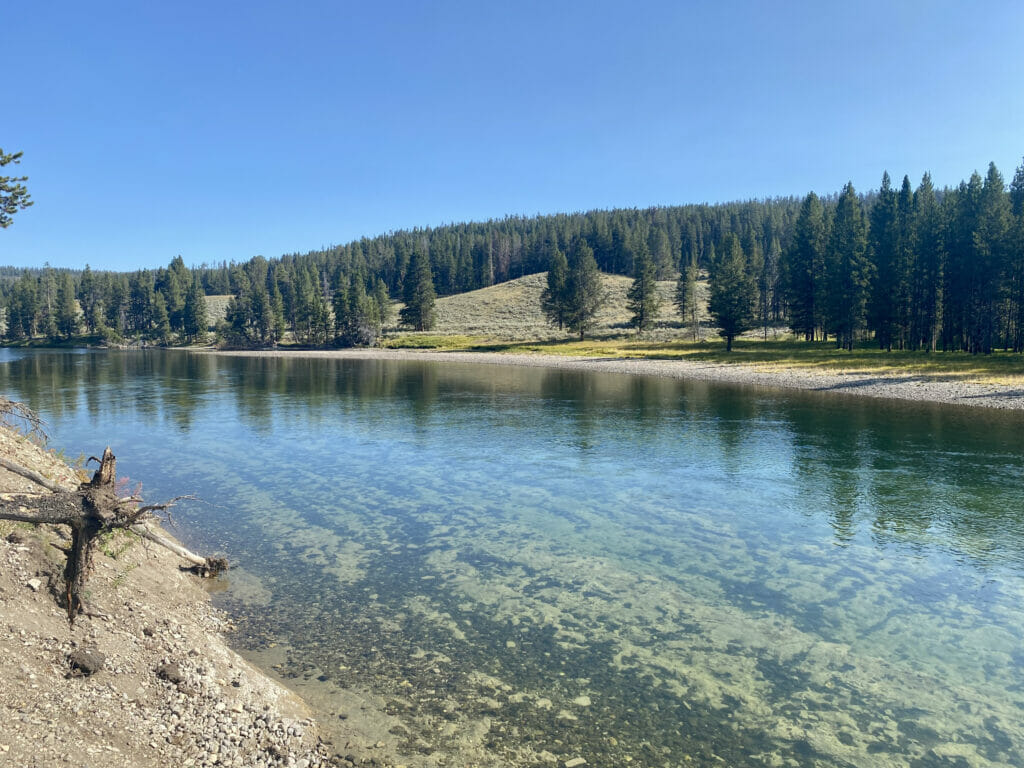
A few hundred yards upstream, we saw a couple fishing from the bank.
Under his breath, Medina muttered a few expletives. Of course, they are exactly where we wanted to go.
From a distance, we watched the woman nearly freefall from the top of the bank as she attempted to get to the water. Medina and I can do nothing but look at each other with a glare that said, “They had to be right there.”
Our grimace turns to wide-eyed gasps as the woman, after getting her footing, launches a crisp 80-yard cast nearly to the distant shore and begins to retrieve.
“Damn,” we laughed together.
Within seconds, the woman’s line was tight, and she was squealing, visibly scrambling. Instinctively, and not at all conspicuously, we walked closer.
“Oh my god, oh my god,” the woman screamed. Our walk became a run.
With her partner out of earshot, I noticed she did not have a net. By the looks of the bend in her rod, I decided she might need one.
“You want a net?,” I asked.
“PLEASE!,” the woman yelled, eyes never breaking from the water.
After sprinting back to the truck and returning with my net, Anna Hawkins, from Minnesota, was delicately putting the final strips into the memorable cutthroat. The 24-inch fish, significantly thicker than her own arms, was the first Yellowstone cutthroat trout Hawkins had ever caught.
After taking a few quick pictures, we assisted the adrenalin-filled Hawkins in resuscitating and releasing the fish of a lifetime.
Her smile was radiant as she repeated the same details of the catch, and the fight, over and over as anglers in shock tend to do.
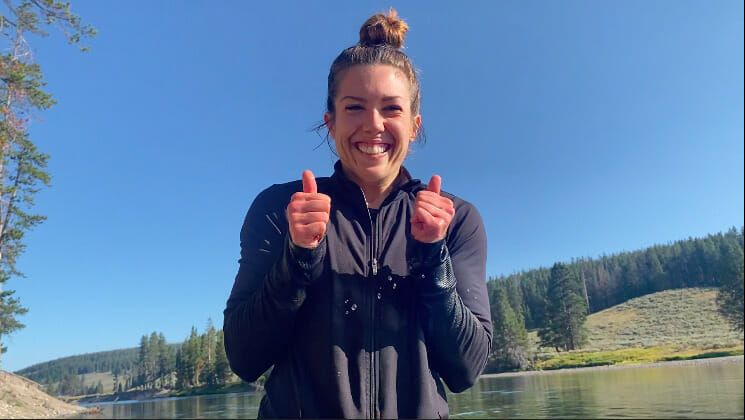
She was hooked.
Couldn’t have expected that.
As is usually the case, after observing Hawkins tangle with her lifetime personal best, Medina and I struggled to hook up on the Yellowstone. Like many wannabe two-handed rod anglers, I refused to let the trout fully take the fly and turn, promptly ripping it right from its mouth on more than a few occasions.
As I drove towards a few favorite cutthroat haunts within the national park, I thought about the unique way Montana approaches the WNTC, and how anglers pursuing the WNTC must approach Montana.
At the end of the day, as Shattuck had mentioned, Montana Parks and Wildlife supports and promotes participation in the Western Native Trout Challenge as an educational experience. I for one certainly learned a lot during my few days in southwest Montana in pursuit of Yellowstone cutthroat.
I learned to never underestimate the topography of the Montana wilderness. Watching Hawkins’ fishing life change before her eyes, I learned the true meaning of angler engagement. I learned the value of being the last guy on the water and the value of going to places that you’ve never heard of in a place that everyone seems to know everything about.
I learned that I was wrong when I thought of the Montana destinations for their native fish as somewhere that I had to go.
These were places that I likely never would have thought to go and experiences I certainly never would have had otherwise.
It’s nice that you don’t have to, but I’m glad that this time, I went the extra step in Montana.



